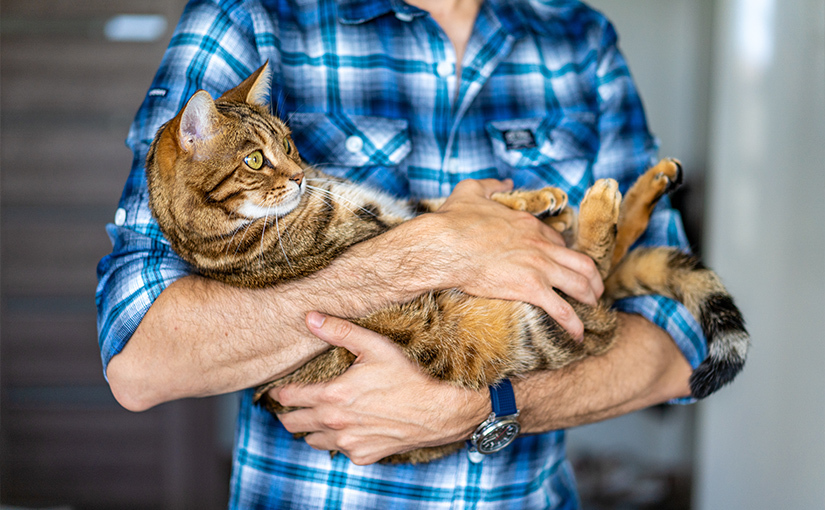Moving Abroad with a Cat: How to Make the Leap with Your Furry Friend

Traveling abroad with a cat may be a little hard but certainly very delightful. You are a keen cat lover and want to make sure that your feline carer is comfortable, safe, and well looked after throughout the whole process. Make this change extremely smooth for everyone, including your cat with pre-thought and preparation. This guide will take you through everything you need to know to pull off a successful moving-abroad plan with your cat—from the pre-travel preparations up to settling down in your new place.
1. Research the Pet Import Regulations
The first step to moving abroad with a cat is to thoroughly research the destination country’s pet import regulations. Each country has its own different requirements, and these need to be known well in advance to avoid last-minute problems.
Key Considerations:
- Vaccination requirements: Most countries, to which you intend to travel with your cat, would require that it must have a cat vaccination meant to prevent rabies, but related vaccinations like feline distemper may be used under specific situations.
- Microchipping: Most countries would expect your pet to be implanted with an ISO microchip before entry. This is important for the life-long identification of your cat and a major way to guarantee its safety if it gets lost.
- Quarantine Periods: There are some countries that impose quarantine periods on pets that are incoming from certain areas. Being aware of these allows you to be prepared for your move ahead of time.
- Health Certificates: A health certificate issued by the veterinarian can be required, showing that your cat is healthy and capable of taking that trip. This certificate may be due within a certain number of days before your departure.
2. Visit The Vet in Advance
A visit to a veterinarian is a good part of your preparation in wanting to move abroad with a cat. This is going to check that the cat is healthy and up-to-date on all vaccinations and can advise any other additional treatments that ought to be administered as front treatment before your move.
What to Discuss with Your Vet
- Health Check: Make sure your cat has a good, solid health check to raise any potential problems that could complicate their move.
- Vaccinations and Treatments: Ensure that all vaccinations are current, and ask if any more are recommended or required for the destination.
- Medications: If your cat is on any regular medication, discuss how to manage dosage during the move and assure that you’ll have an adequate supply to see them through the transition time.
- Travel Anxiety: Discuss with your vet any anxiety management strategies during travel. They may suggest calming products, like pheromone sprays or prescribe mild sedatives when necessary.
3. Choose the Right Way to Travel
One of the key decisions you will make when moving abroad with your cat is the method of traveling. The way to travel will depend on a number of issues that include your destination, budget, and nature of your cat.
Air Travel
- Cabin vs. Cargo: If the cat is small enough, it might get a chance to travel with you in the cabin. Larger cats might require to be shipped in the cargo hold. Now you’ll want to look up airlines which are particularly reputable in the area of shipping pets.
- Travel Crate: Ensure you get a good and quality travel crate that will be approved by airlines. The crate should be well ventilated, secure, and large enough to allow the cat to turn around, stand, or lay down comfortably. Spend enough time familiarizing your cat with the crate long before the journey to minimize stress.
Ground Travel
- Driving: In case of a close country relocation, you can, of course, drive if you have enough time. It is also more comfortable for your cat, with many stops to rest along the way.
- Professional Pet Transport Services: If you’d rather have others handle all the planning and logistics, consider engaging professional pet transportation; it will become an easier task for you since they specialize in moving pets safely, managing the entire process from documentation to transportation.
4. Prepare Your Cat for the Journey
The key to ensuring your cat is comfortable and stress-free through the process of moving is proper preparation ahead of time. Start the preparation well enough beforehand to allow your cat to adjust.
Introduce the Travel Crate to Your Cat
- Gradual Introduction: First, set up a kitten crate in your home and let your cat slowly get used to it by putting its well-known bedding, toys, or treats inside so that it seems like a positive space.
- Short Practice Trips: Take your cat in the crate for short drives around town to get them accustomed to the experience. Increase the time you spend on these trips as the time to move gets closer.
Adjust Feeding and Drinking
- Feeding Schedule: The day of travel, let your cat have a light meal several hours prior to the journey to keep away from a stomach upset. Allow them to drink water but do not make them drink too much as this may increase the number of toilet stops.
- Travel Essentials: Pack a small bag for your cat, containing food, water, a portable litter box, and any medication that the pet requires during the journey.
5. Gather All Necessary Documents
When one prepares to move to another country with a cat, it will be a hundred times smoother if all the necessary documents are organized and kept at an arm’s length. These documents will be asked for by officials at every step of the process, i.e., during check-in, security clearance, and custom clearance.
Documents Required:
- Health Certificate: Make sure you’ve secured a health certificate from your vet, as it is needed by airlines and customs.
- Vaccination Records: Get the vaccination records of your cat. Especially, proof of vaccination for rabies is required.
- Microchip Details: Keep microchip details at hand, like the registration number and proof of its registration in your name.
- Import Permit: Some countries require an import permit for your pet. So, you get to know what the specific requirements of the destination are, and have a permit applied for in advance.
6. Arrival Planning
Transition does not come to an end once you arrive in your new country. Furthermore, planning for your cat’s arrival and adjustment in the new surroundings is as important as the journey itself.
Entering a New Home
- Provide a Safe Room: Quiet and comfortable room for your cat in the new house during the first few days. Include a few familiar stuff in that room: a bed, toys and a litter box.
- Routine and Comfort: As much as possible, follow your cat’s routine with regards to feeding time, playing, and other activities to comfort them in your new location.
Find a Local Veterinarian
- Research Local Vets: Before the move, research veterinarians in your new area. Ask locals or expatriates, or look for reviews online, to know which clinic is the best.
- First Consultation: Pet owners should be sure to make an appointment for a check-up with the new vet after a short while of arrival. This should aim at ensuring that your cat is in perfect health and his/her medical history has also been transferred into the care of the new vet. It is also at this point that you get information on any local health concerns that could be affecting your cat.
7. Update Your Cat’s Identification
Finally, after settling down, update your cat’s identification with respect to your new location.
Update Microchip Information
- Contact the Microchip Registry: Inform them about your moving and provide your new address and contact information. So, they can get in touch with you and find you through your feline, in case of an unfortunate event—your cat wanders away.
Update ID Tags
- New Address and Phone Number: If your cat has an ID tag, for heaven’s sake, be sure that it has your new information on it. This is a simple way of being certain that you will get your cat back in case it bolts.
Conclusion
Moving abroad with your cat takes much preparation and detail, but with the right preparation, you can ensure that your feline friend will land on its feet. Read on, as this guide will help you through every level, from pre-travel vignettes through to helping your cat find its feet in new surroundings. Remember, patience and care are the keywords for successfully taking this big step with your furry friend to a stress-free new life.









